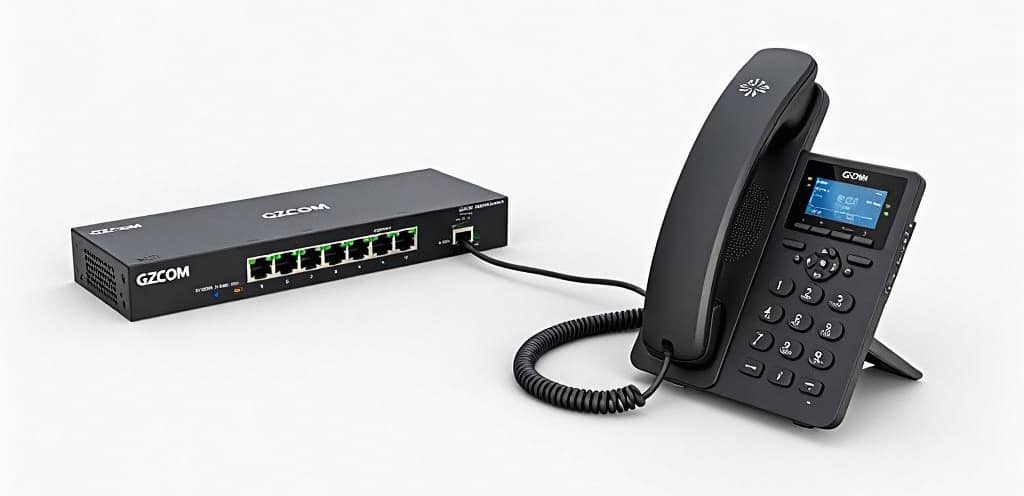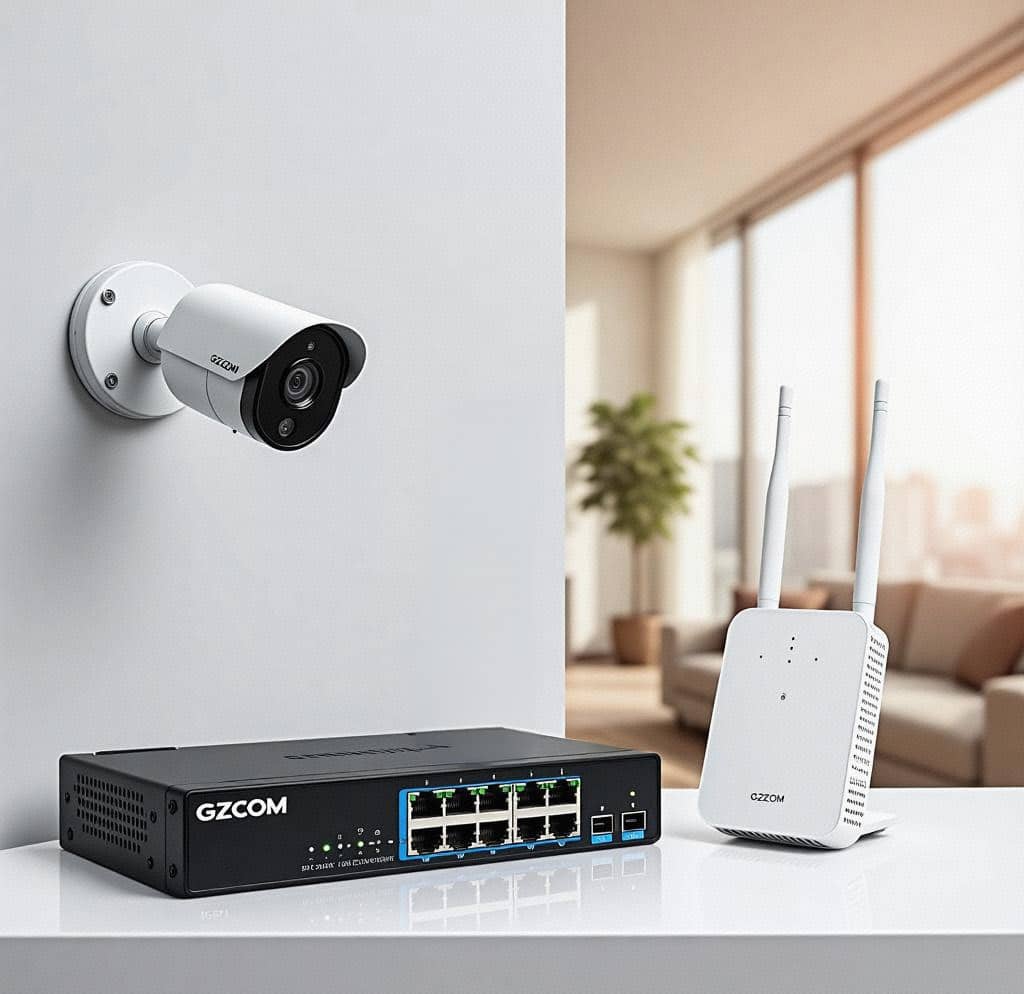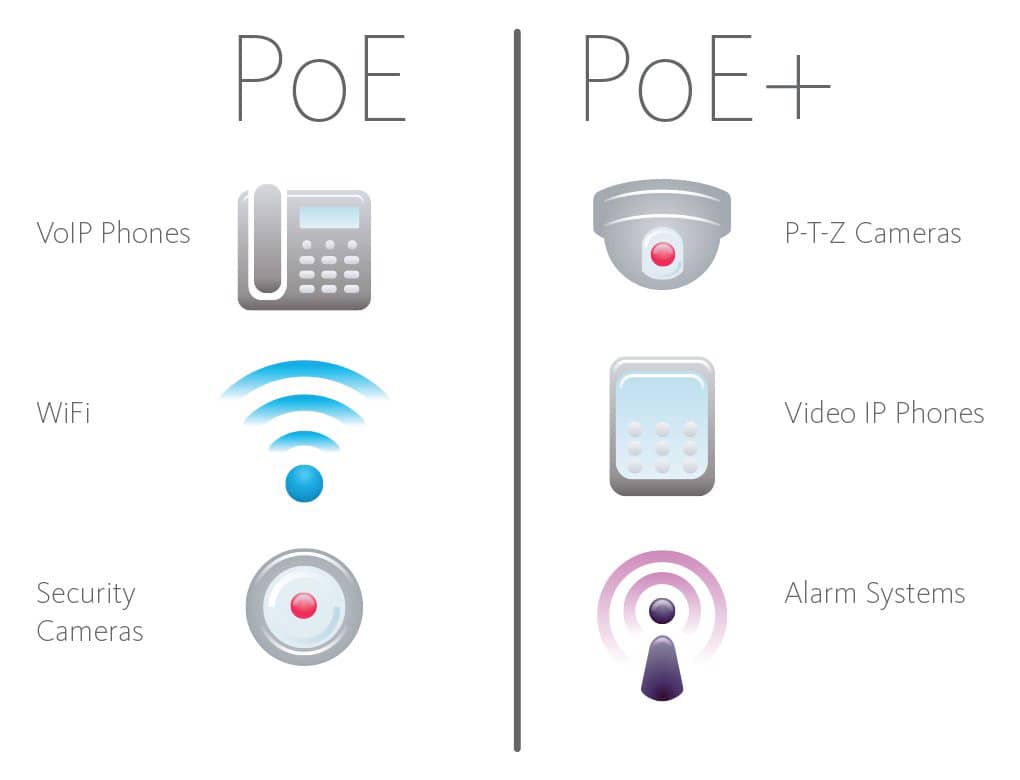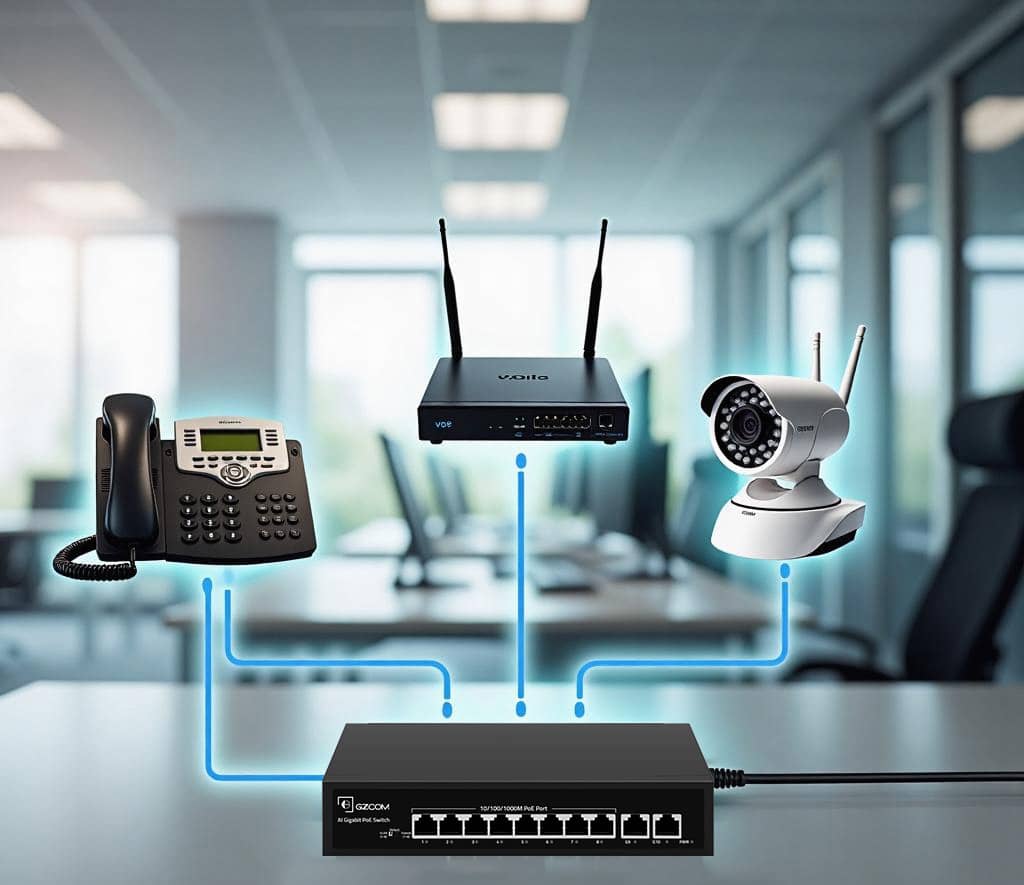Please submit your message online and we will contact you as soon as possible!
- Experience security and speed, without compromise.

2025-03-26
The Power over Ethernet (PoE) technology has transformed into an essential requirement to simplify network infrastructure due to modern worldwide connectivity. Through a integrated Ethernet cable connection PoE delivers data alongside power distribution so every installation requires less power outlets which results in easier and more organized deployments. However, the evolution of PoE has led to different standards, with the most common being PoE and PoE+. Choosing the appropriate poe switch requires complete understanding of the differences between these standards due to their distinct characteristics. The following guide provides detailed explanations about PoE and PoE+ standards to support your network decision-making process.
Network deployments underwent a significant change with IEEE 802.3af establishing the original PoE standard allowing VoIP phones and basic wireless access points together with low-power IP cameras to draw power directly from their Ethernet cables. Through PoE ports both power and data could be transmitted which eliminated the requirement of different power adapters that helped decrease costs and improve ease of installation and decreased cable entanglement. A standard PoE port on a poe switch can provide up to 15.4 watts of DC power. However, the power available at the device itself is typically around 12.95 watts due to cable losses.
Key characteristics of PoE (IEEE 802.3af) include:
Maximum Power Delivered by the PSE (Power Sourcing Equipment, typically a poe switch): 15.4 watts
Maximum Power Available to the PD (Powered Device): 12.95 watts
Standard: IEEE 802.3af
The combination of VoIP phones with basic wireless access points and low-resolution IP cameras makes up a majority of PoE applications.

Higher-powered network devices created the need to develop a stronger power over Ethernet standard. The establishment of PoE+ (IEEE 802.3at) became possible after this need surfaced in the market. The power supply features of PoE+ exceed those in the foundation PoE standard. The delivery capacity of a PoE+ port on a poe switch reaches 30 watts but the powered device will receive approximately 25.5 watts after cable losses are considered. The larger power capacity enabled the possibility to support additional types of devices with these standards.
Key characteristics of PoE+ (IEEE 802.3at) include:
Maximum Power Delivered by the PSE (typically a poe switch): 30 watts
Maximum Power Available to the PD: 25.5 watts
Standard: IEEE 802.3at
Common Applications: More advanced wireless access points, pan-tilt-zoom (PTZ) IP cameras.


The main goal of Power over Ethernet (PoE) and Power over Ethernet (PoE+) is identical but their fundamental aspects differ as follows:
PoE+ represents the main variation because it provides twice the amount of power supply capabilities. Designed sources for PoE allow 15.4W of power distribution but when using PoE+ this figure doubles to 30W. This translates to roughly 13W and 25.5W respectively at the connected device. If your device requires more than 13W, you'll need a poe switch that supports PoE+.
PoE+ delivers double the power output level that enables users to power new device types. The power delivery capabilities of PoE+ make it ideal for running high-end wireless APs with multiple radios and advanced surveillance cameras with pan/tilt/zoom functions along with selected LED lighting systems since it gives half more power than regular PoE provides. Your device power needs determine whether you should pick a standard poe switch or a poe+ poe capable switch.
The cost of PoE switches that support PoE+ standards is higher than the prices of switches which only support PoE standards alone. Enhanced modules required for power delivery cause the total cost to rise. Supporting more devices through your network and making your installation last longer makes up for the minor cost difference between different types of devices.
The new PoE+ ports function as an older PoE port. A device which supports PoE can be attached to a PoE+ port so it obtains the necessary power supply (up to 12.95W). Any device that needs power over 12.95W from PoE+ will not work properly when connected to a common PoE port. The power requirements of your devices need to be checked beforehand when selecting a poe switch for purchase.
In the modern network infrastructure that is rapidly evolving, PoE+ has some marked advantages:
Power Increase: : In modern devices, such as high-level wireless access points with multiple antennas, PTZ cameras and digital signage systems—require much power than the 12.95W that PoE delivers. Increased power, therefore, provides the necessary conditions for the best performance of high-end devices.
Network Future Proofing: Considering how improvements perceive network devices to be even more power-thirsty. Investing in a poe switch whereby PoE+ is supported is an assurance that your infrastructure will be future-ready for upgrades and deployments.
Greater Flexibility: This implies that PoE+ provides greater flexibility in the deployment of a wider array of devices in different places without necessarily being confined by power outlets. Businesses stand to gain a lot in their endeavors to either expand their network or install more advanced equipment.

When choosing a poe switch, one must take into account the following parameters:
Number of PoE Ports: The number of PoE ports available, as this can determine how many PoE-enabled devices you are able to connect at present and in future.
Power Budget: your poe devices require from the network. Make sure the PoE switch has an adequate power budget to support all attached devices at once.
Network Speed: The user should decide the required network speed and choose a poe switch accordingly.
Managed vs. Unmanaged: Decide between the advanced configuration and management capabilities of a managed poe switch or go for the simple plug and play option in an unmanaged switch.
We know a solid network makes all the difference—in most cases, it’s the heartbeat of any operation. At GZCOM, you’ll find an assortment of PoE switches that isn’t stacked in a cookie-cutter way; sometimes you get the standard, everyday types, and other times there’s the beefier PoE+ models built to handle extra loads. Whether you’re looking to power VoIP phones, set up wireless access points, or hook up IP cameras (and yes, even other PoE-dependent gear), chances are we've got something to fit your needs. Really, no matter the size of your business or the specific setup you’re after, you can count on us to have your back.
Please submit your message online and we will contact you as soon as possible!